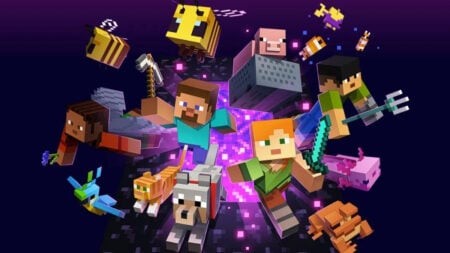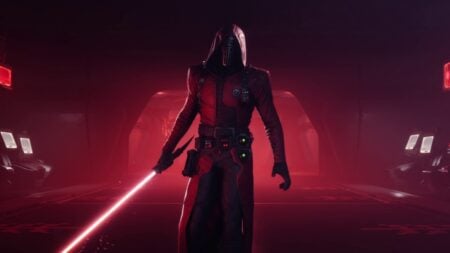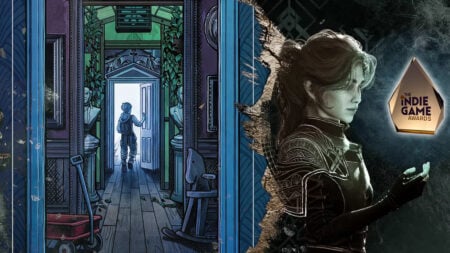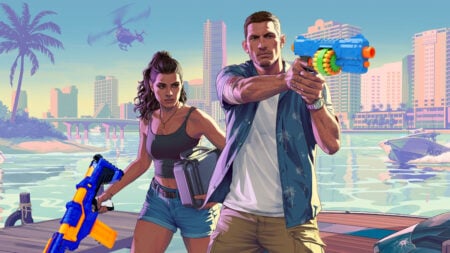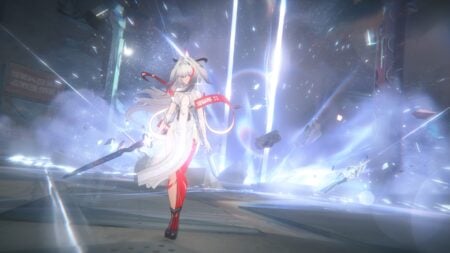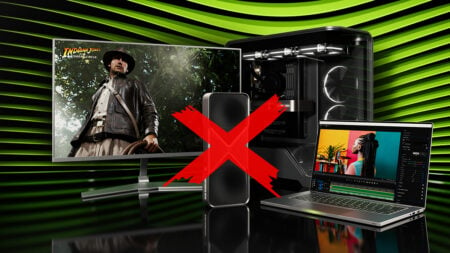Skip To...
Hellboy Web of Wyrd feels like a comic book came to life. Upstream Arcade collaborated with Hellboy creator Mike Mignola to create this roguelike action brawler, so it’s no surprise it feels authentic to the original. Mignola’s iconic art style and character design perfectly complement the rough, impactful fighting of Upstream Arcade. Like any good comic book, you’ll wish it lasted longer than it does, and sometimes there are only staples holding it together. Despite its flaws, Web of Wyrd is in many ways a brilliant adaptation. Big Red has never looked better in a game. It’s just a shame this roguelike doesn’t always hold up around him.
Hellboy Web of Wyrd Review – Comic Carnage
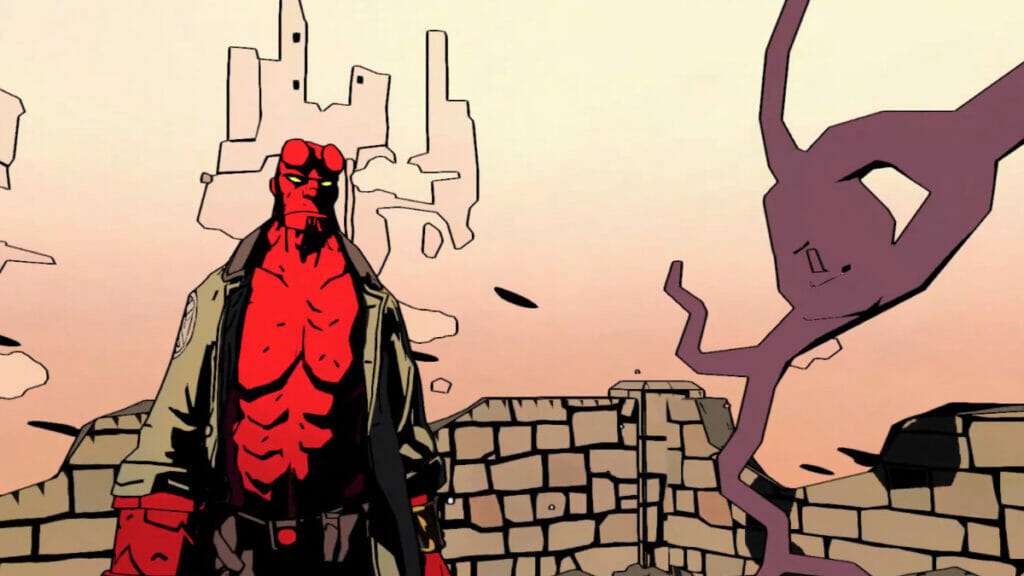
Hellboy is trying to do the Good Guy thing again, and as usual, the case has gotten messy. He and his friends at the B.P.R.D. have been investigating a supernatural realm that borrows from folklore and reality alike, and the case has fallen to Hellboy to close. Unsurprisingly, the strange creatures in this world don’t appreciate Hellboy butting his hornless head into their business. Not one to be deterred, Hellboy punches, shoots, slams, and slices his way through enemies in a variety of procedurally generated realms. Roguelike bonuses and meta progression help our demonic hero develop his skills in order to take down bosses, collect artifacts, and unravel the mysteries of the Wyrd.
Story: Storybook Hijinks
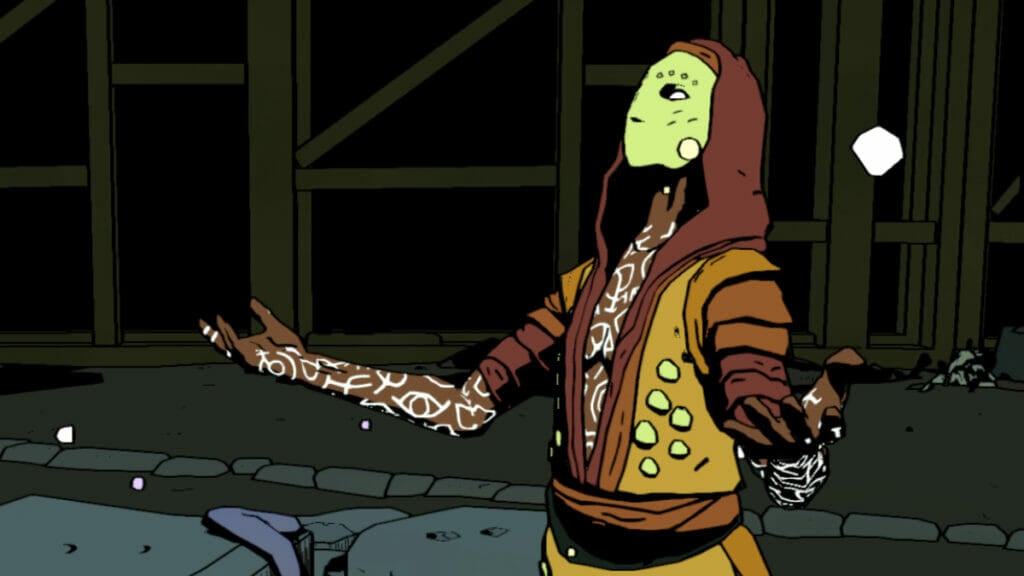
Hellboy has a habit of making strange friends, and those friends have a habit of getting tangled up in supernatural drama. Web of Wyrd starts with Hellboy on a mission to retrieve one of his allies from the first realm of Wyrd, a place of floating architecture, crumbling buildings, and twisted trees. He soon meets three strange creatures that resemble the Norns of Norse mythology: creatures who twist the threads of destiny between their fingers for gods and men alike. It’s not clear at first whether these are friends, foes, or just meddling observers, and things only get weirder from there.
Strange things are afoot in Wyrd, and the only way to get answers is to dive deeper in. That simple premise takes Hellboy on a journey through a series of unique realms, from sunken cities and shadowy mines to fairy-plagued forests. The plot follows a natural comic book flow, splitting the story into issues and concluding each with a nasty boss fight. As you explore, you find scattered artifacts that can be returned to the Butterfly House library to provide further glimpses into the nature of the mystery.
Big Red’s adventures aren’t restricted to the Wyrd, however. Between diving into that supernatural otherland and punching monsters in the face, our hero returns to the Butterfly House to rest, upgrade his gear, and chat with his allies at the B.P.R.D. The Butterfly House is the team’s HQ and is vital to the story. Calling the Butterfly House a house is like calling a Cerberus a dog: you’re not wrong, but it’s so much more than that. The construction project of famed occultist Pasquale Deneveaux was created to act as a doorway to the Wyrd. Like Telltale titles, Web of Wyrd uses its comic influences impeccably here.
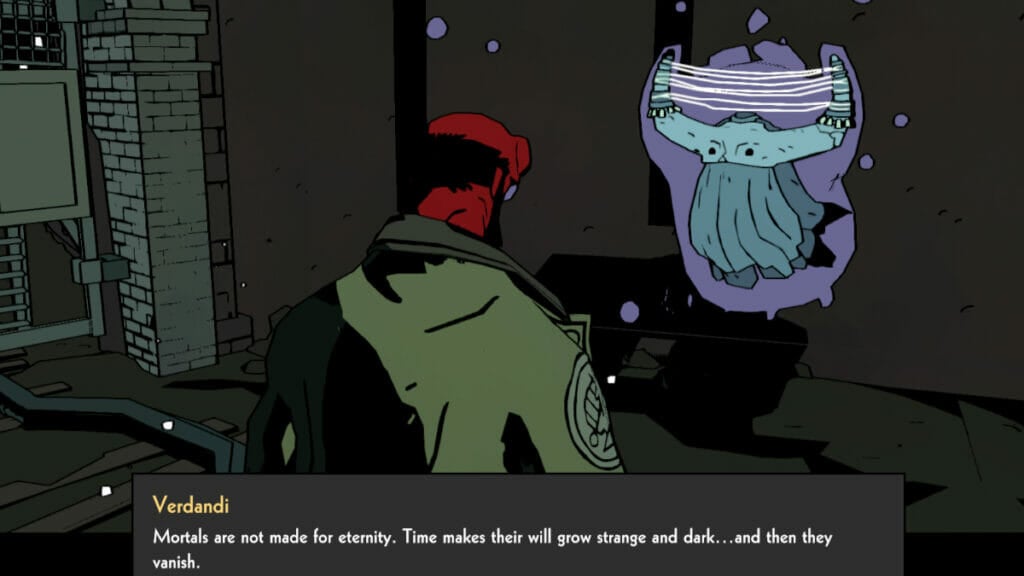
Another story is why anyone would want to go to such a strange and dangerous place. At first, the House only matters as a hub where players can take a breather between hectic battles, chat with some NPCs, and improve their equipment. As the game progresses, however, the Butterfly House becomes increasingly interesting and important. Like many of the best settings in the comic books that inspired Web of Wyrd, the Butterfly House is a character of its own, radiating personality from every heavy bookcase and grim shadow.
Cutscenes and conversations are kept brief and to the point, but they’re enough to let a bigger story slowly unfold. They’re also enough to show off the personalities of the main characters. That’s a blessing because Hellboy’s allies are genuinely funny and interesting most of the time. It’s a testament to the quality of the writing as well as the voice performances, and even characters I originally thought were flat eventually revealed fun and surprising layers. As much fun as kicking the crap out of magical monstrosities is, getting to drop by the Butterfly House for a chat with the crew is a welcome addition.
The story’s star is Hellboy himself, and it’s obvious that as much love went into playing him as drawing him. Web of Wyrd does a terrific job of capturing what makes the Right Hand of Doom so beloved in Mignola’s original. Funny, gruff, and tender all at once, the character’s writing is pitch-perfect, as is his voice acting. Upstream Arcade demonstrates exactly why comic collections are so prized. Whether you’re a long-time fan of Mignola’s work or this is your first introduction to Big Red, Web of Wyrd shows what has kept the character popular for three decades.
Gameplay: Wham! Bang! Pow!
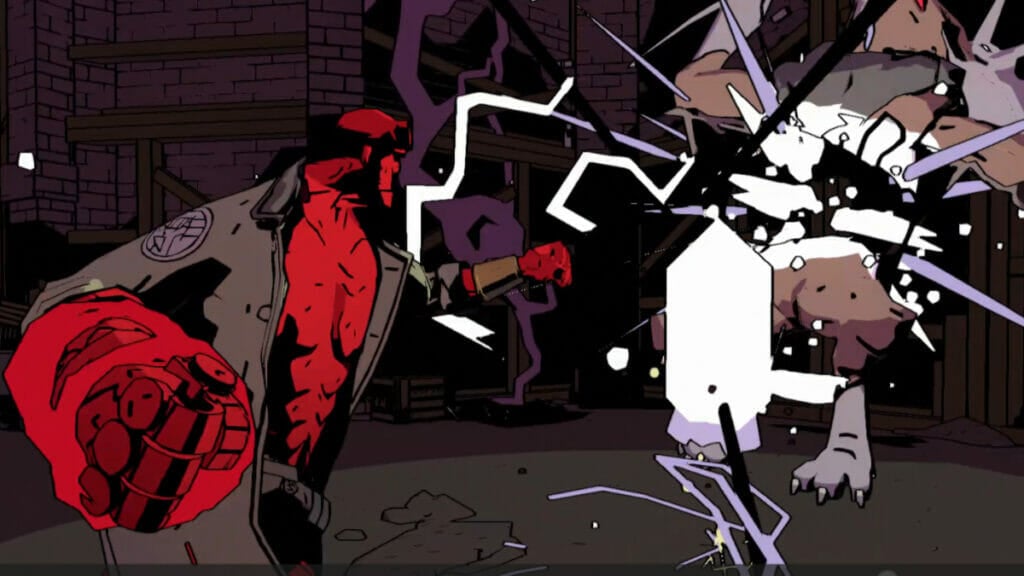
Hellboy’s favorite solution to most problems in Web of Wyrd is to smash the problem against a wall or shoot it with an oversized gun, so the roguelike action brawler genre is a natural fit. Your mighty fists are your primary weapons, but a gun and charm of your choice supplements them. Maybe you want to play it safe, using a shield and bazooka to clear rooms with minimal risk. Maybe you prefer a shotgun and knife, tearing through enemies at point-blank range. There are several viable playstyles, but they all amount to the same thing: destroy, destroy, destroy.
Lesser mobs are barely a distraction, but Big Bads and bosses require far more thought. Dodges, blocks, counters, stuns, and special conditions help give combat a natural rhythm. Battles develop a natural and exhilarating flow once you figure out each enemy’s attack patterns. Hellboy doesn’t just punch people, he punches them through stone columns and into walls. Hit an enemy with a flurry of fists, blast them with your pistol for a quick stun, and then drive a charged punch into their gut to finish them off. If that doesn’t work, just pick up a boulder and chuck it at them.
They’re not exactly Soulslike baddies, but bosses are still a challenge. New biomes in Wyrd introduce new enemy types, but many of them feel similar, and none of the mobs are difficult. You unlock new guns and charms as you progress, and all of them can be leveled up at the Butterfly House between missions, adding new effects or buffing their old ones. Once you understand the rhythm, combat in Web of Wyrd is incredibly satisfying. Time a dodge perfectly, and time slows for a moment, allowing you to savor the feeling as the Right Hand of Doom blasts your enemy into a new century.
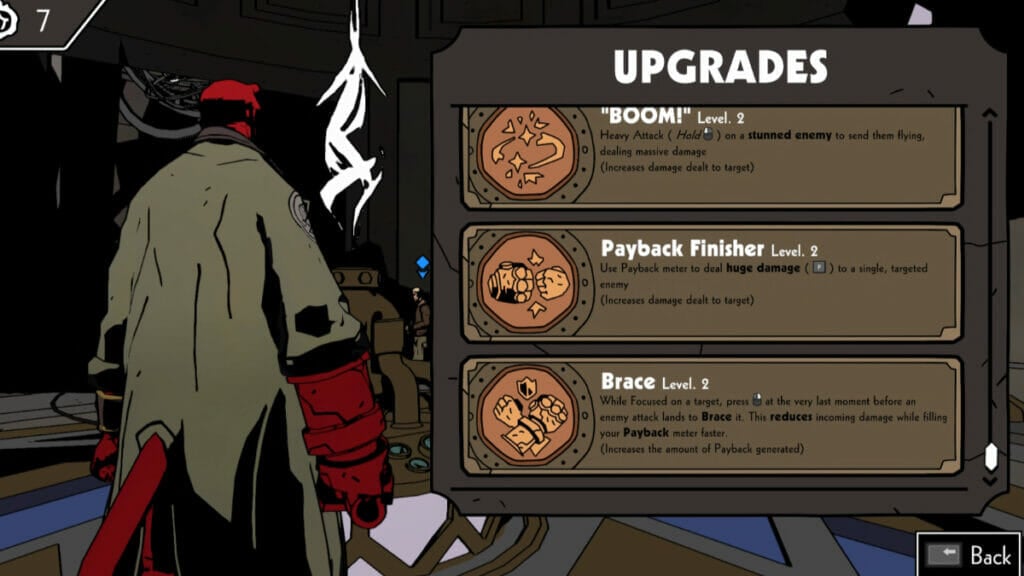
Each area is based on a random seed, and as you explore, you’ll discover and choose between temporary upgrades. Want more health? How about a faster reload for your pistol or a shorter cooldown for your blade? These upgrades are one of the game’s main roguelike elements, and they all feel impactful. The issue is there aren’t many of them. After a few trips to Wyrd, you’ll have seen pretty much everything the fates have to offer. A small number of upgrades means a small number of upgrade combinations, and ultimately, that means repetition. For a genre that depends upon replayability, that’s a huge problem.
In terms of art style, the biomes in Wyrd are very different. In terms of gameplay, however, they’re almost identical. You progress from one room to the next, beating up whatever you find, grabbing treasure, artifacts, and power-ups, and occasionally sidestepping a trap or two. For your first few trips, it’s extremely fun. The intense similarity between dungeons and the lack of diversity in powers, however, seriously reduces the game’s replayability and long-term enjoyment. Stuttering in a few crowded areas doesn’t help. Web of Wyrd is a fantastic action brawler but a mediocre roguelike.
The game also suffers from some QoL and performance issues. They’re few in number but affect core parts of the experience and become deeply frustrating over time. There’s a weird lag before menus register your inputs, and the lack of responsiveness becomes grating after a while. The camera’s horizontal panning also feels off. I eventually learned how to deal with it well enough to navigate combat, but even with the sensitivity dialed up to maximum, it always felt cumbersome. Walking simulators and point-and-click games can get away with bad cameras. Action games can’t. You should be fighting monsters, not the controls.
Graphics & Audio: Sumptuous Sights and Sounds
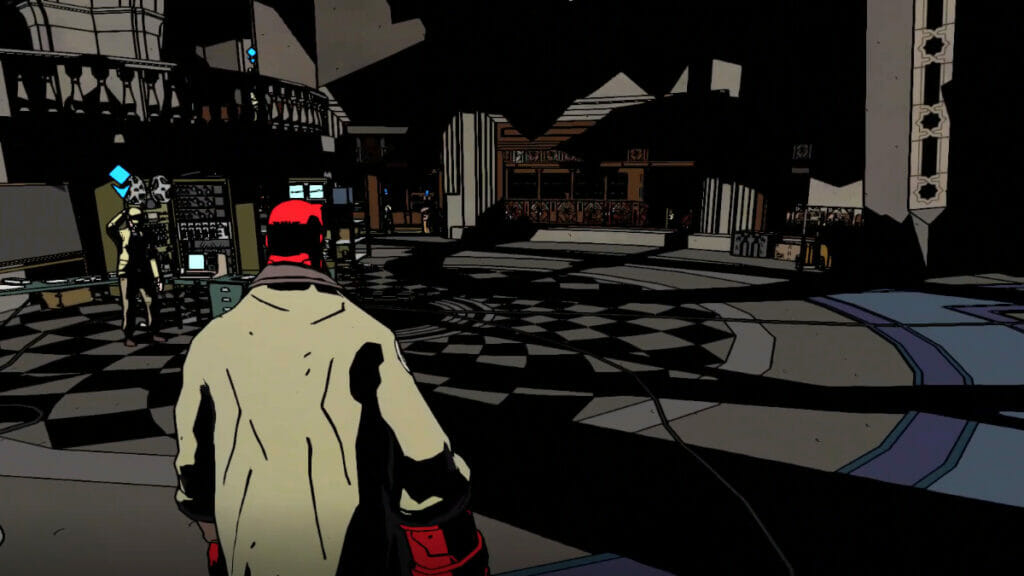
Hellboy isn’t the first roguelike to do the cartoon aesthetic well, but it’s exceptional nonetheless. Screenshots can’t do justice to how good Web of Wyrd looks in motion. The two closest references, other than Mignola’s own comics, are Hades and the cinematic adaptation of Sin City. “Stylish” is a word you’re going to use a look when you think about this game. Web of Wyrd oozes style in the best possible way. Just look at the chiaroscuro shadows of the Butterfly House to the vibrant red of Hellboy himself. The art team did an outstanding job.
The game’s art and sound design are at their best in combat. Normal hits feel impactful, and special attacks like ground slams are nothing short of spectacular. Lethal blows cause mobs to burst into clouds of smoke, dropping stylized coins wherever they fell. The bazooka’s explosion is an all-consuming orange blossom. The game lingers just long enough on blows, blocks, and dodges that you get to thoroughly enjoy each of them. It’s a detail that most games in the genre get wrong, and Web of Wyrd does it exceptionally well.

The music and ambient noises are atmospheric if somewhat forgettable. Nothing sticks in your head or leaves a deep impression, but it all feels undeniably right in the moment. Hellboy comics often exude smoky jazz lounge energy: fun and casual yet weirdly sophisticated for reasons you can’t quite put a finger on. Hellboy: Web of Wyrd nails that vibe, particularly in the Butterfly House. It’s unfortunate that the game doesn’t take better advantage of that location.
Your enemies and allies all look and sound right at home in the Hellboy universe. The cutscenes don’t do them many favors, though. Despite taking their cues directly from the comics, cutscenes are extremely simple in framing and execution. Dynamic paneling and other comic standards would have gone a long way toward drawing the player in during these moments and making each character stand out. Without them, conversations are functional but not much more than that. It’s not that cutscenes look and sound bad, it’s that there’s a floodlight on the missed opportunities here.
Conclusion: Near Miss
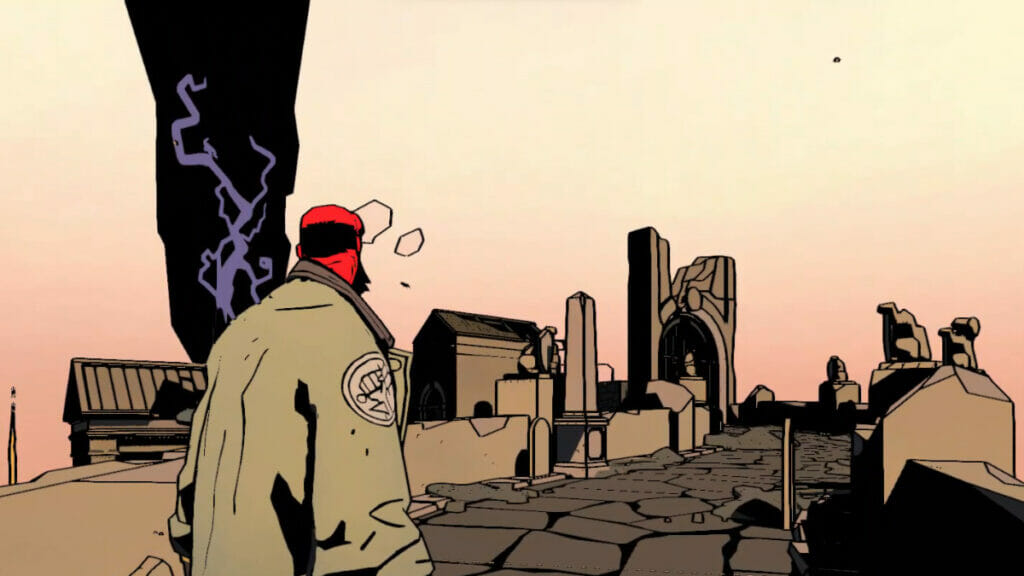
Hellboy Web of Wyrd is not a bad game, but it is an uneven one. Its highs are spectacular, and its lows are crushing. Were it judged solely on its art and faithfulness to the comics, it might earn a perfect score. Yet a few flaws seriously impact the gameplay experience. If future patches or DLC resolve the QoL issues and diversify the game’s roguelike elements, Web of Wyrd could be an exceptional entry in the genre. It’s not far from the mountaintop of greatness, but there’s still a long way to climb.
The roguelike genre has demanding expectations, and they aren’t quite met here. For diehard Hellboy and Dark Horse fans, the game is easy to recommend. For everyone else, Web of Wyrd is a great way to kill a weekend. It just doesn’t offer much longevity beyond that. The team behind it is undeniably talented. With any luck, they’ll get another crack at Big Red and his adventures someday because they could make something spectacular. For now, the best way to enjoy Hellboy is still the comics.
Hellboy Web of Wyrd will be available for PC, PlayStation 4, PlayStation 5,
Hellboy Web of Wyrd (PC Reviewed)
Devilish superhero action ripped straight out of the comics but held back by its inconsistencies.
Pros
- Near-perfect comic book artstyle
- Stylish and satisfying combat
- Great voice acting
Cons
- Numerous QoL issues
- Repetitive level design
- Upgrade options are lacking


